Disparate in genres and united by a common geography, the newly opened exhibition on Bengal art, The Babu and the Bazaar, is a fabulous reflection of a bygone Calcutta. Starting in the 19th century, the city was the commercial hub of British India and its only seaport. Ships crowded the Hooghly river, evidence of the brisk mercantile trade in fine fabrics, tea, jute, opium, and rice.
It was truly a city of opposites: of the extremely wealthy and the impoverished. Where black Victorian boots were worn with dhotis and saris, and bejewelled courtesans carried lace parasols. The newly-wealthy — designated as babu — was English educated, unconcerned with his country, and obsessed with pursuing his pleasures. In contrast, the bazaar and its hardworking tradespeople catered to the throngs of pilgrims at Kalighat, soldiers, and the new immigrants that fuelled a cosmopolitan Calcutta.
Around the Kali temple sat artists, known as patuas, who made the Kalighat pat. What began as paintings on cloth, later became watercolours on paper that were sought after souvenirs. Humorous paintings of Bengali men in black coats sitting in languor, beaten by their wives, or in a secret love tryst were especially popular. With a clear aim to please their patrons, the art coalesced into a genre called Kalighat painting, a unique mélange of styles, mediums and inspirations.
Drawn from the 19th and 20th centuries, the art at the exhibition is curated in three broad segments: the original Kalighat pats and its inspired prints, lithographs and oleographs, often with jewellery and attire borrowed from communities across India; oils on canvas inspired by Kalighat themes and pandering to the nouveau riche; and reverse glass paintings created by artist in Canton (Guangzhou, China), another British trading centre, in the hopes of finding a new market in India.
Here is a selection from the exhibition:
The iconography of the goddess Lakshmi is pan Indian. Here, she is shown seated cross-legged on a lotus and being showered with water from a pot by two elephants on either side. Notice the quintessential Kalighat style of watercolour on paper and a plain background — and, charmingly, an ink pen note by the owner, likely a foreigner, in cursive hand: “A beautiful lady sitting on a lotus. She is the goddess of riches.”
Gajalakshmi
Calcutta’s leitmotif, the fierce Goddess Kali, is depicted as a wrathful Dakshina Kali standing on a supine Shiva in this oil on canvas. Her fabulous jewellery, besides the plethora of gold ornaments and a tiara inspired by the traditional Bengali solar mukut, also includes a gory skull necklace and a girdle of hacked arms of her enemies around her waist. Her bejewelled magnificence, highlighted in gold pigment, is a reflection of the city’s cross-cultural nature.
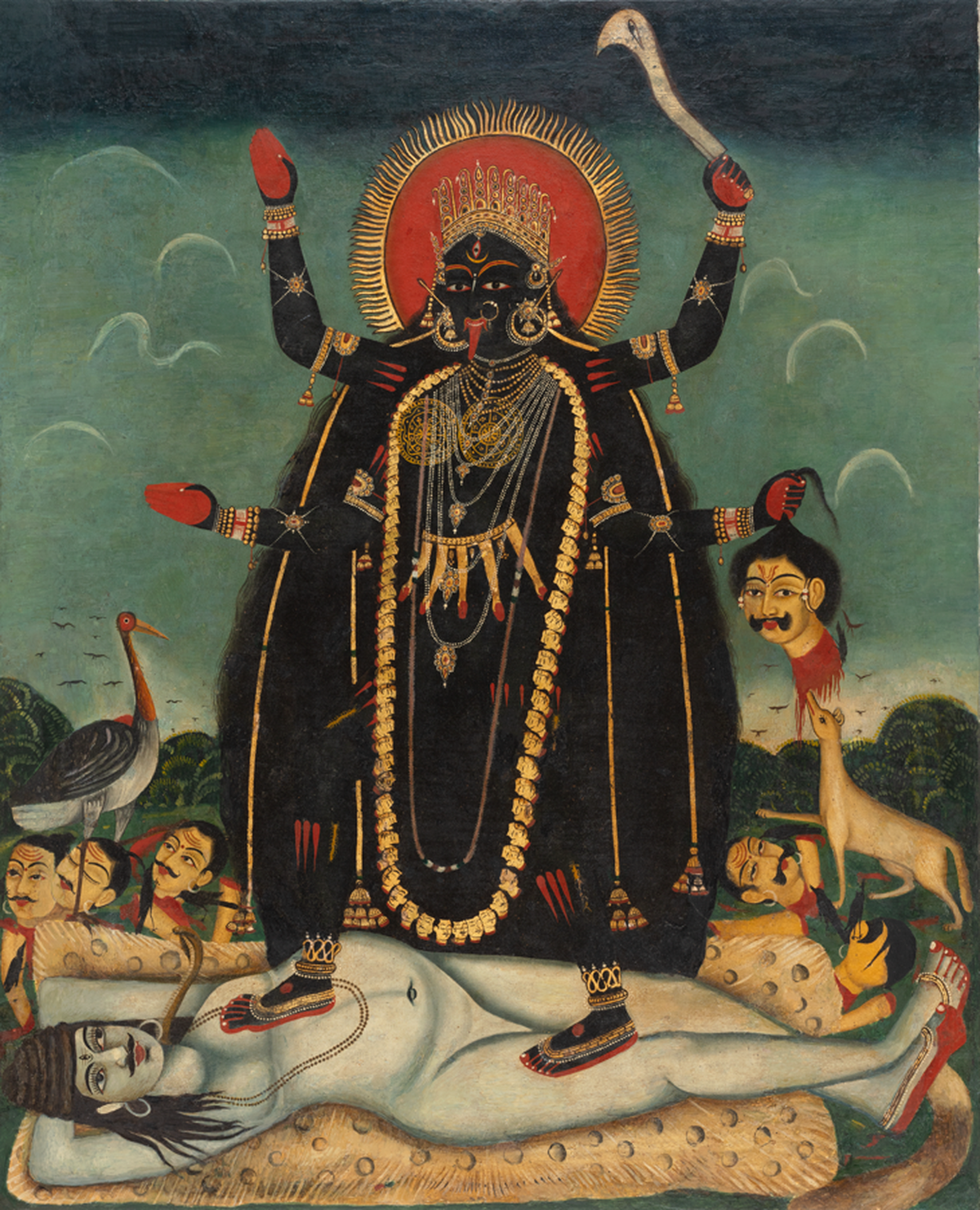
Dakshina Kali
With strong Vaishnavite influences, this Rath Yatra shows the journey of Lord Krishna and his brother Balarama as they leave their home in Gokul. Dramatic in scope, as the ladies lament their beloved’s leaving, the painting indicates multiple influences of 19th century Bengal. The women’s attire is inspired by Rajasthan’s lehenga-choli, and a colonnaded white mansion that peeks out from the top right reflects the rapidly changing architecture of the city.
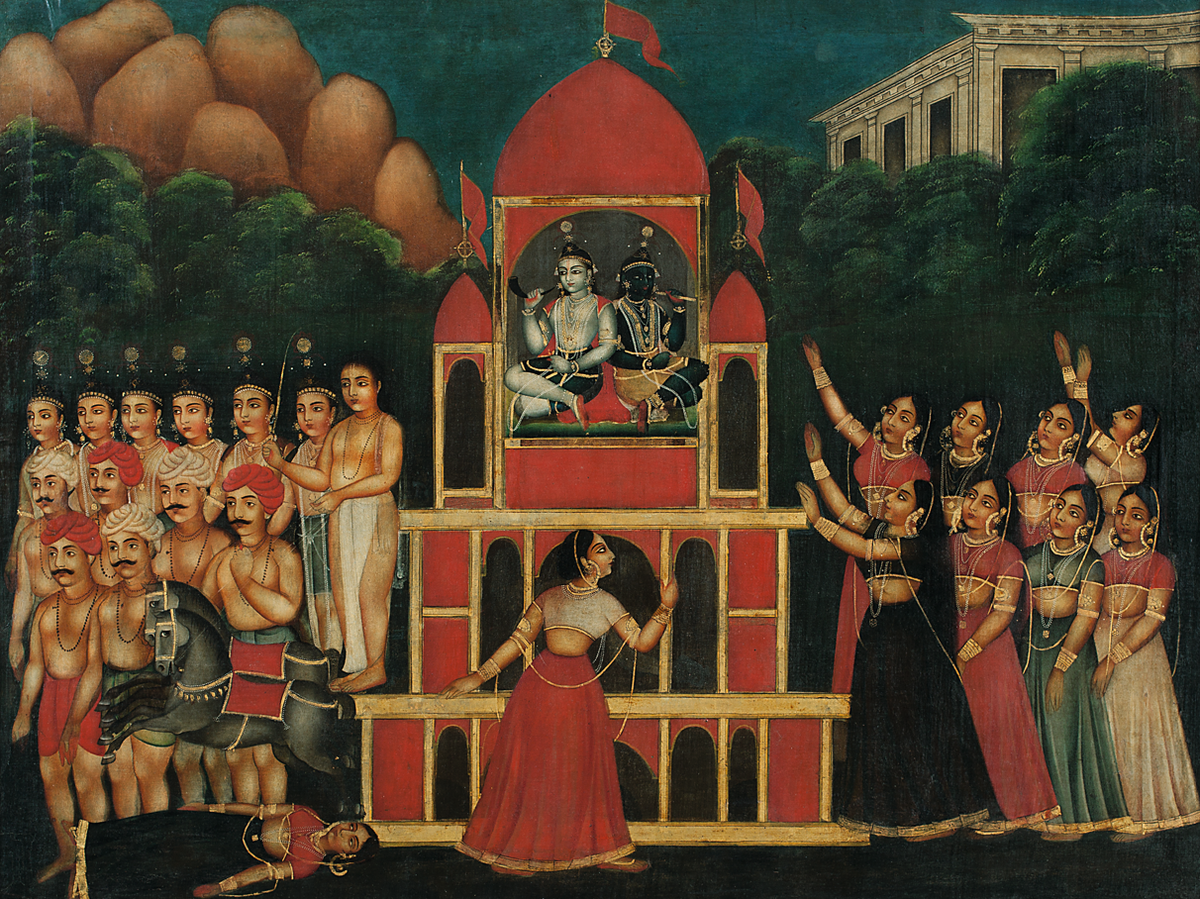
Rath Yatra
Watercolours of deracinated babus were popular. 19th century Calcutta was a city of wealthy men, perpetually drunk and enjoying its many offerings. Typically commissioned to titillate, these paintings also show the changing lifestyle of the times, where new furniture and accessories — like the babu’s Victorian shoes — were making an appearance.
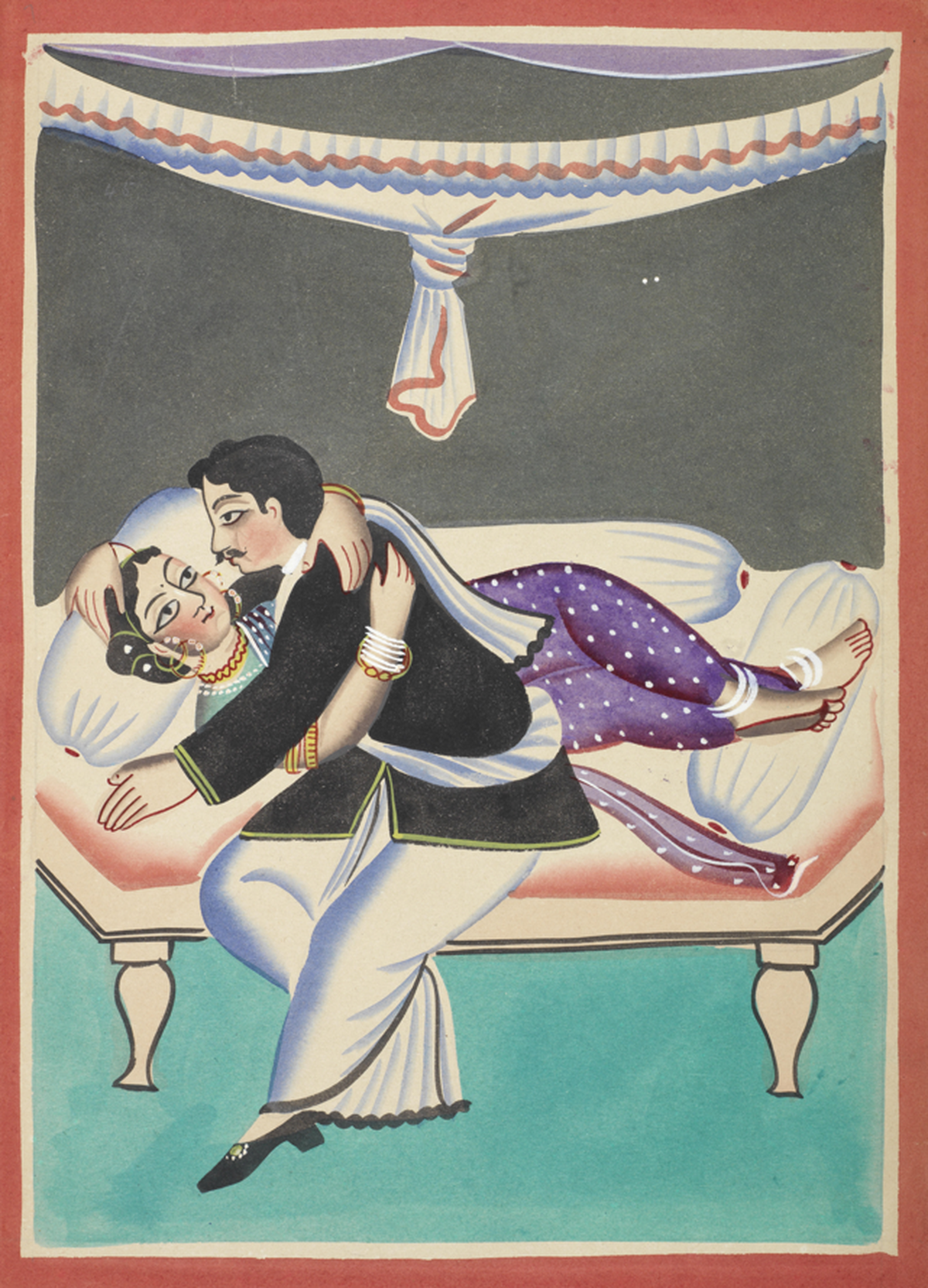
Calcutta babus
19th century Bengal had two distinct cultures. While White Calcutta busied itself trying to look like a city of the British Empire, teeming with colonial architecture and urban spaces, the natives inhabited poorer areas in Black Calcutta. Here, disease was rampant as was social ostracisation based on caste and societal taboos. Widows, known by their white saris with black borders, were abandoned, unemployable and often took to begging outside the temples or were forced into prostitution. This erotica was ironically called ‘sundari’ images and the pair above — one adorning herself and the other preparing a betel leaf for a customer — tell a silent story of survival.
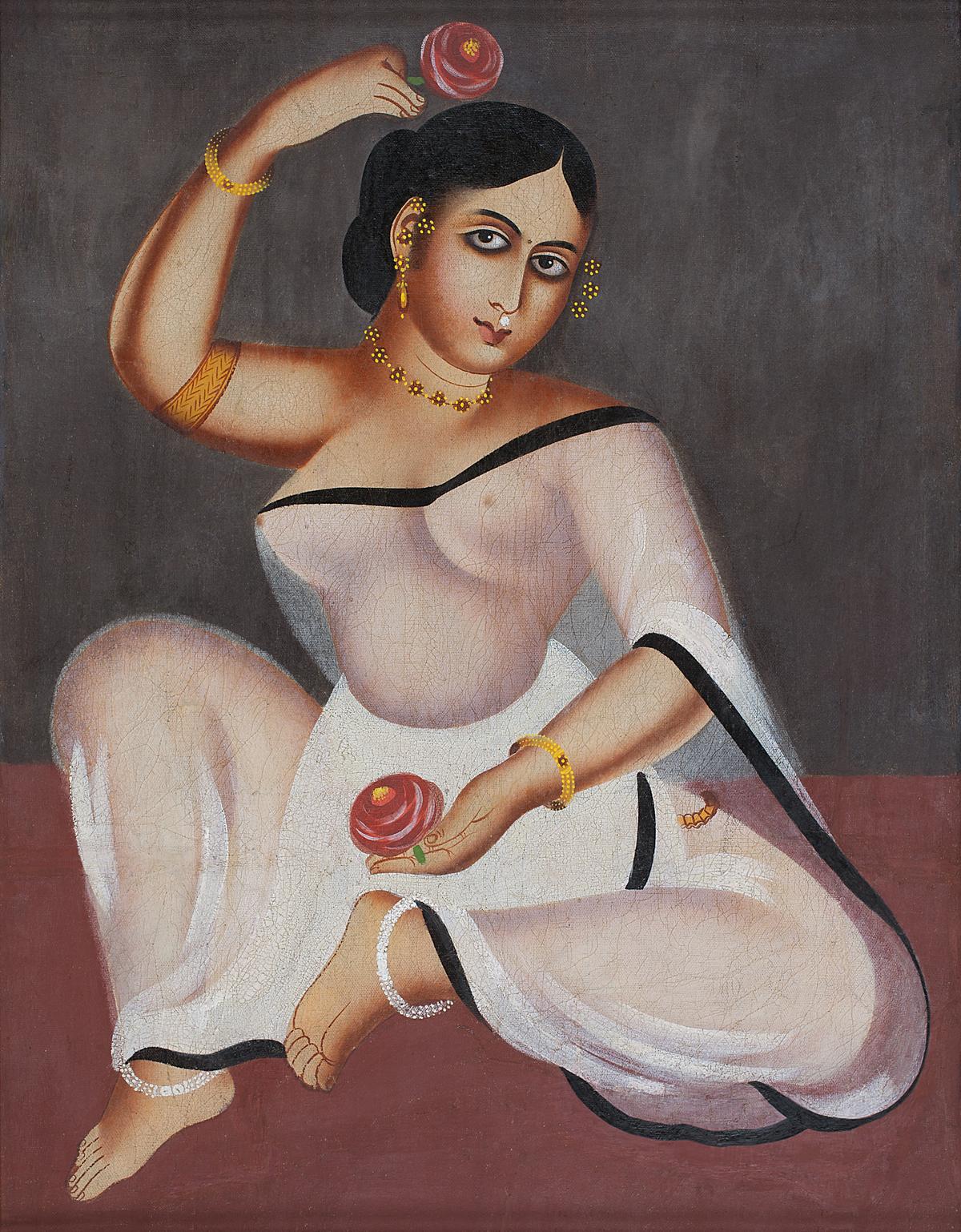
Sundari
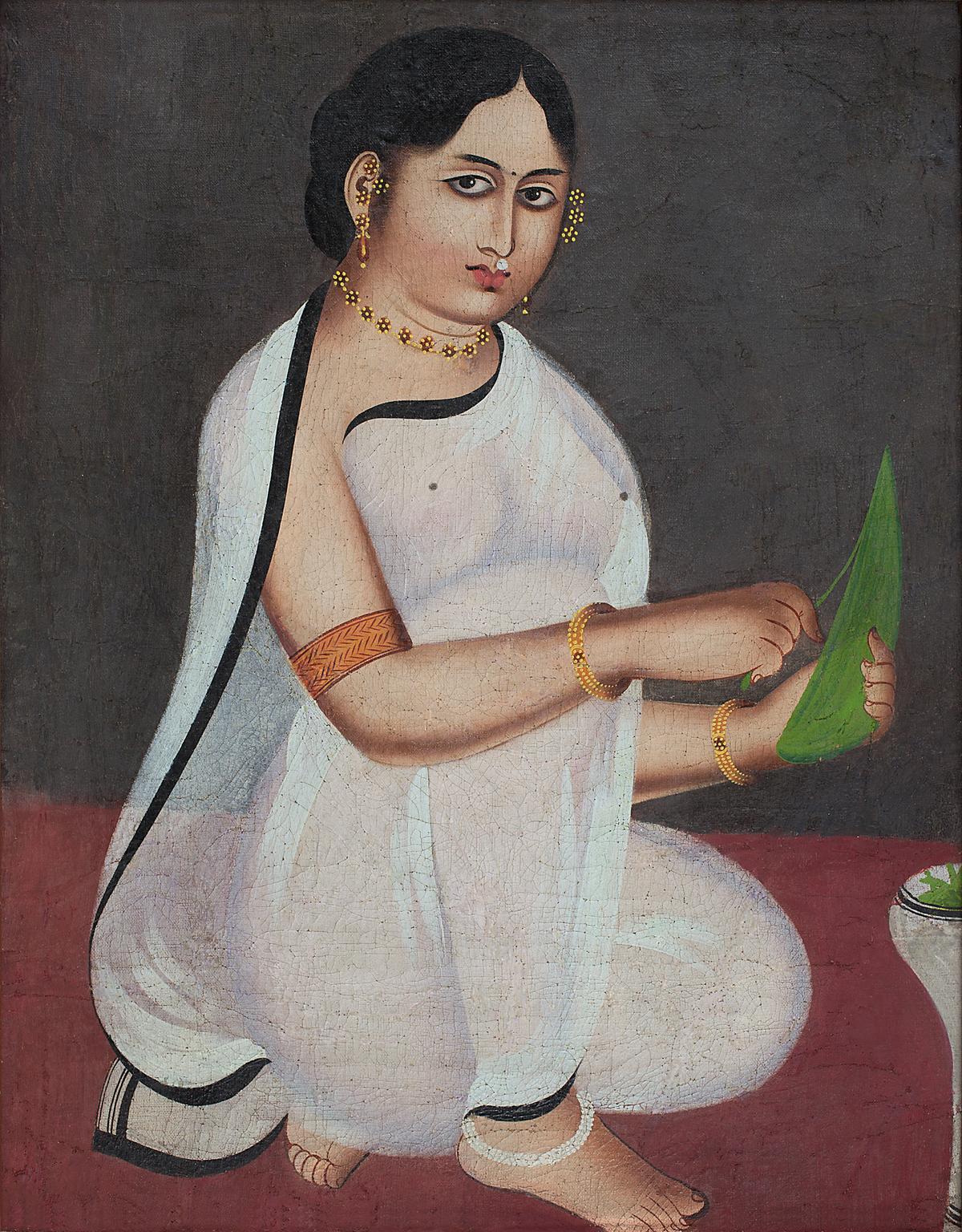
A classic Kalighat pat, it shows a beauty at her daily toilet, fixing a flower in her hair with alta dye-stained palms. Notice the semi-erotic overtones and profuse jewellery. Later artists were directly influenced by the style and themes of the patuas. For example, Jamini Roy, the Bengal modernist painter, would style his iconography much like this painting — with a similar posture, jewellery and clothes — reinterpreting the subject with his notable graphic lines.
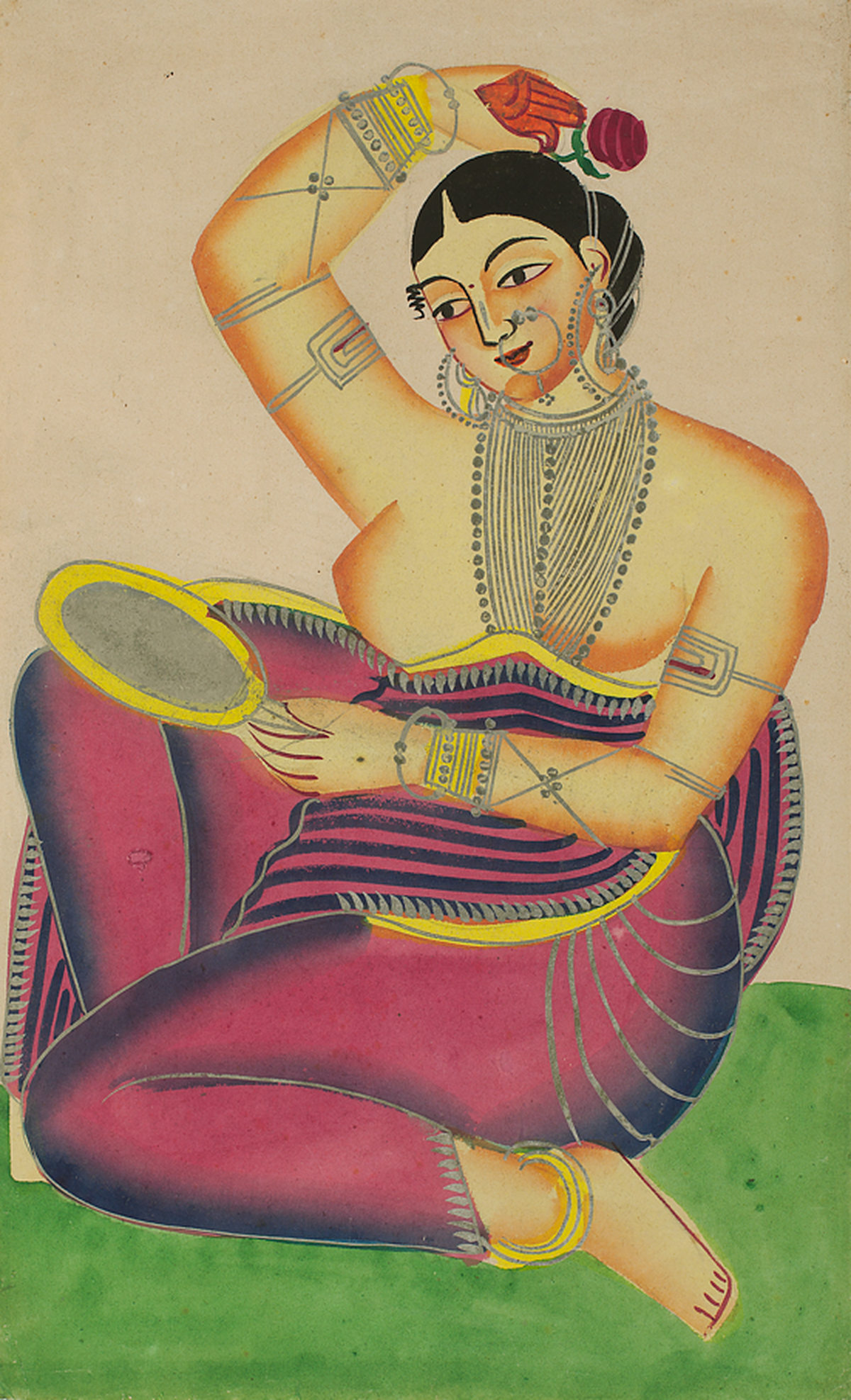
A Kalighat pat
This glass painting was possibly made in Canton and is a marvellous example of the cross-cultural trade between artists and their inspirations. Pat paintings spread to ports where the trade ships from Calcutta journeyed and were quickly reinterpreted by local artists in the hope that they would find new patrons or markets in India. Executed in reds and blues on the reverse of a piece of glass, the painting would then be framed, securing it and creating a waterproof work. Here, it details a scene from the Ramayana, of the 10-headed Ravana.
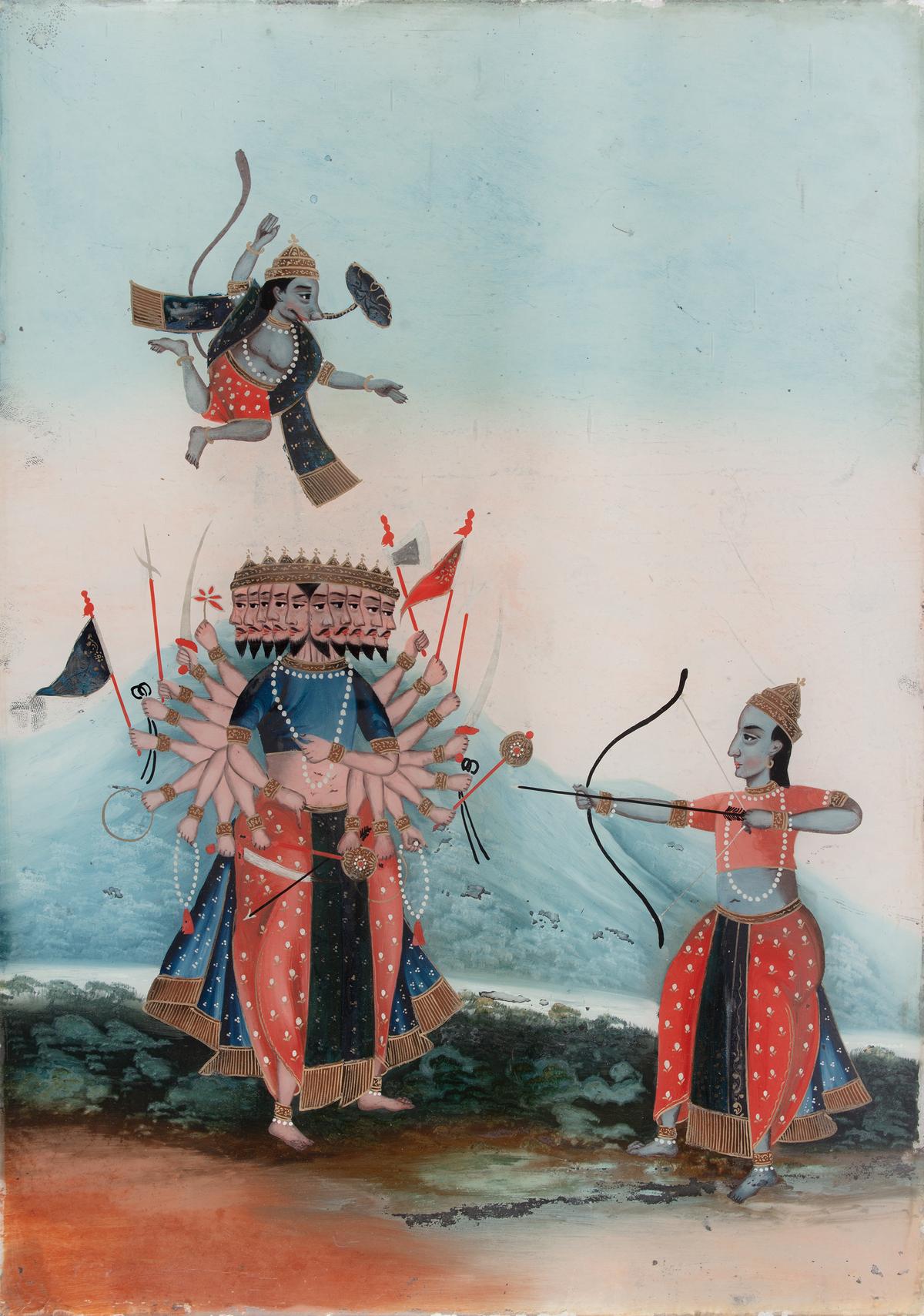
A glass painting of Ravana
Erotic chromolithograph prints such as this ‘pin-up’ poster, were often copied from oil paintings or inspired by Kalighat pats. They were popular tourist souvenirs.

An erotic chromolithograph
At DAG, The Taj Mahal Palace, till June 29.
The writer is the founder-director of Eka Archiving Services.